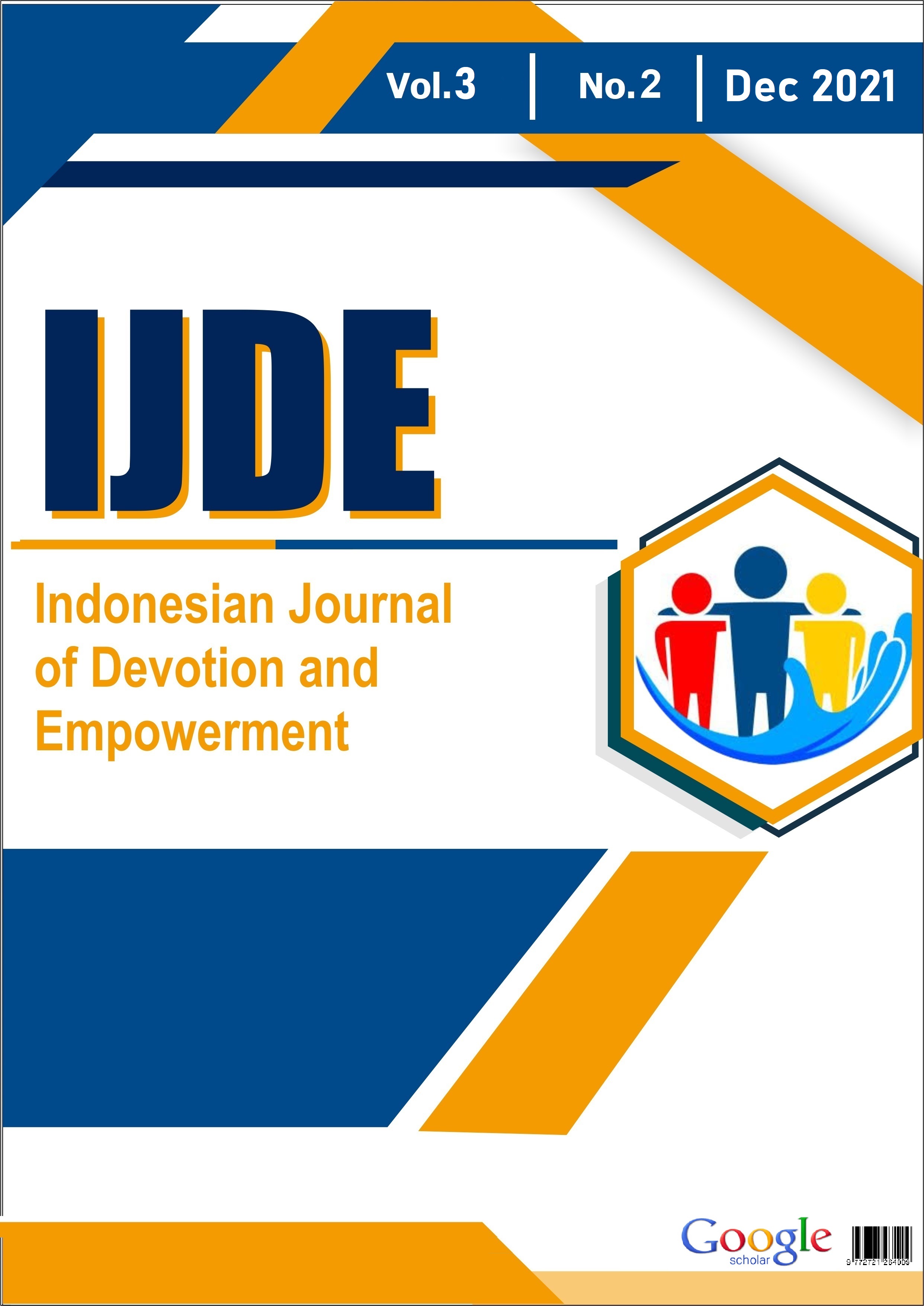CAPABILITY DEVELOPMENT OF BUMDES “ASUNG DAYA” IN PRESENTING ASSET VALUE
##plugins.themes.academic_pro.article.main##
Abstract
The purpose of community service is to provide an understanding of asset assessment, measurement, and asset recognition through administrating the assets of Village Owned Enterprises (BUMDes). The methods of activities used are socialization, training and mentoring. The target community audience is the Director and manager of BUMDes Asung Daya and The Secretary of the Jatijajar Village bergas district of Semarang Regency. Socialization, training, and assistance in understanding the assessment, measurement, and recognition of assets run smoothly. BUMDes managers understand how to conduct asset valuations by using current market value. If the asset is a fixed asset, then its economic life is more than 12 months. If the asset is a current asset, then its economic life is less than 12 months. So far BUMDes has been able to compile financial statements correctly. However, some terms are not commonly used in accounting such as initial balance accounts, meaning the inventory of merchandise (beginning of the period). Recording of current assets in the form of inventory of merchandise in the asung daya minimarket is done computerized so that if you want to know the amount of stock just open on the cashier's computer. The financial statements prepared are accounted for in village deliberations (musdes) attended by the Village Consultative Agency (BPD), women representatives, cadet corals, community leaders, BUMDes administrators, and village devices.
Tujuan pengabdian kepada masyarakat ini adalah memahamkan penilaian aset, pengukuran, dan pengakuan aset melalui pengadministrasian asset Badan Usaha Milik Desa (BUMDes). Metode kegiatan yang digunakan adalah sosialisasi, pelatihan dan pendampingan. Khalayak masyarakat sasarannya adalah Direktur dan pengurus BUMDes Asung Daya dan Sekretaris Desa Jatijajar Kecamatan Bergas Kabupaten Semarang. Kegiatan sosialisasi, pelatihan, dan pendampingan pemahaman penilaian, pengukuran, dan pengakuan aset berjalan dengan lancar. Pengurus BUMDes memahami cara melakukan penilaian aset dengan cara menggunakan nilai pasar saat ini. Jika aset tersebut adalah aset tetap, maka umur ekonomisnya lebih dari 12 bulan. Jika aset tersebut adalah aset lancar, maka umur ekonomisnya kurang dari 12 bulan. Selama ini BUMDes sudah dapat menyusun laporan keuangan dengan benar. Akan tetapi ada beberapa istilah yang tidak lazim digunakan dalam akuntansi semisal akun saldo awal, maksudnya adalah persediaan barang dagangan (awal periode). Pencatatan aset lancar berupa persediaan barang dagangan yang ada di minimarket asung daya dilakukan secara komputerisasi sehingga jika ingin mengetahui jumlah stok nya tinggal buka di komputer kasir. Laporan keuangan yang disusun dipertanggungjawabkan dalam musyawarah desa (musdes) yang dihadiri oleh Badan Permusyawaratan Desa (BPD), perwakilan perempuan, karang taruna, tokoh masyarakat, pengurus BUMDes, dan perangkat desa.
##plugins.themes.academic_pro.article.details##
References
Carter, A. J., Burritt, R. L., & Pisaniello, J. D. (2013). The dual roles for accountants in sustaining rural communities. Accounting Research Journal.
F Kusmuriyanto, K., Feriady, M., & Susilowati, N. (2019). Inisiasi Pembentukan Bumdes Bersama untuk Meningkatkan Perekonomian Desa di Kecamatan Jambu Kabupaten Semarang. Jurnal Abdimas, 23(2), 112-116.
Galani-Moutafi, V. (2013). Rural space (re) produced–Practices, performances and visions: A case study from an Aegean island. Journal of Rural Studies, 32, 103-113.
Hayyuna, R. (2014). Strategi Manajemen Aset BUMDES Dalam Rangka Meningkatkan Pendapatan Desa (Studi pada BUMDES di Desa Sekapuk Kecamatan Ujungpangkah Kabupaten Gresik). Jurnal Administrasi Publik, 2(1), 1-5.
Kania, I., Anggadwita, G., & Alamanda, D. T. (2021). A new approach to stimulate rural entrepreneurship through village-owned enterprises in Indonesia. Journal of Enterprising Communities: People and Places in the Global Economy.
Menkhoff, L., & Rungruxsirivorn, O. (2011). Do village funds improve access to finance? Evidence from Thailand. World development, 39(1), 110-122.
Setyawan, S., Priyono, N., & Iswanaji, C. (2017). Development Model of E-Budgeting and E-Reporting System on the Management of Village Fund Finance. Jurnal Dinamika Akuntansi, 9(1), 92-99.
Susilowati, N., Anisykurlillah, I., & Lianingsih, S. (2020, June). Peningkatan Kapabilitas Pengurus Unit Usaha E-Warung BUMDes Sumber Arto Melalui Pemahaman Pembukuan Sederhana. In Seminar Nasional Pengabdian Kepada Masyarakat UNDIP 2020 (Vol. 1, No. 1).
Susilowati, N., Anisykurlillah, I., & Mahmud, A. (2021). PENGEMBANGAN SUMBER DAYA BUMDES ASUNG DAYA DALAM ADMINISTRASI KEUANGAN BERBASIS KOMPUTER. Panrita Abdi-Jurnal Pengabdian pada Masyarakat, 5(4), 600-611.
Susilowati, N., Herdiani, A., & Widhiastuti, R. (2018). Village Community Participation Model in Village Funds Management to Exteriorize the Accountability. KnE Social Sciences, 1024-1038.
Susilowati, N., Mahmud, A., Rachmadani, W. S., Lestari, S., & Tusyanah, T. (2020). The Contribution of Village Fund Management for Creating More Prosperous Society: An Empirical Study at Central Java. Jurnal ASET (Akuntansi Riset), 12(2), 357-371.
Susilowati, N., Mahmud, A., Widhiastuti, R., & Rahman-ingtyas, W. (2020). Good Village Governance: Internal Control Model of Village Funds Management. KnE Social Sciences, 137-148.
Triani, N. N. A., & Handayani, S. (2018). Praktik pengelolaan keuangan dana desa. Jurnal Akuntansi Multiparadigma, 9(1), 136-155.
Vel, J. A., & Bedner, A. W. (2015). Decentralisation and village governance in Indonesia: the return to the nagari and the 2014 Village Law. The Journal of Legal Pluralism and Unofficial Law, 47(3), 493-507.
Yuniarta, G. A., & Purnamawati, I. G. A. (2020). APAKAH POTENSI DESA DAN KEPEMIMPINAN TRANSFORMASIONAL MAMPU MENINGKATKAN PENDAPATAN?. Jurnal Akuntansi Multiparadigma, 11(1), 77-88.
